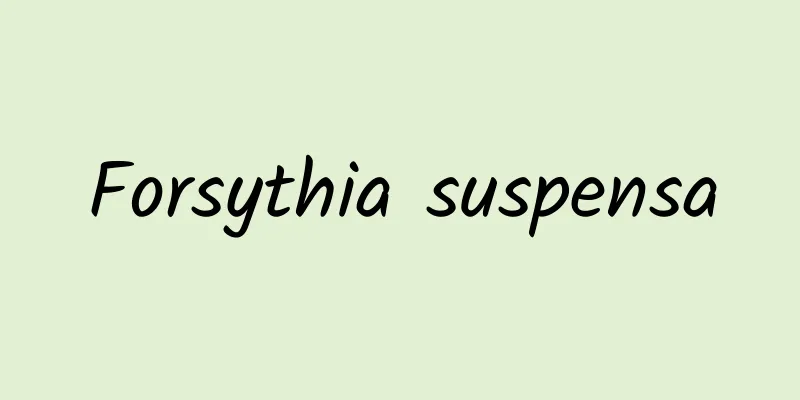What are the effects and functions of Phyllanthus urinaria?

|
Phyllanthus urinaria is a cold medicinal material. Its main effect is to clear away heat and detoxify. It can also treat diarrhea and help promote digestion and absorption. Therefore, it is very popular in normal times. It can be used to make soup or decoct herbs, and can also be put together for food therapy. [Nature and flavor and meridians] Cold in nature, slightly bitter in taste. It enters the liver meridian and spleen meridian. 【Effects and Functions】Clears away heat and detoxifies, stops diarrhea, soothes the liver and improves eyesight. Heat-clearing and detoxifying drugs under the category of heat-clearing drugs [Clinical application] The dosage is 15-30 grams (60-90 grams can be used for edema), decocted and taken orally; for external use, appropriate amount, mash the fresh grass and apply it around the wound. It is used to treat nephritis edema, urinary tract infection, stones, enteritis, dysentery, infantile malnutrition, keratitis, and icteric hepatitis; it can be used externally to treat bamboo snake bites. For the treatment of enteritis, diarrhea and bacterial dysentery, 50 grams of this product can be used alone and decocted or taken orally; it can also be used together with 50 grams of geranium. To treat night blindness, you can use 50-100 grams of fresh grass and 2-3 duck livers to stew the soup. After it is cooked, eat the duck liver and soup. [Main ingredients] Contains quercetin, astragalus glycosides, quercetin, isoquercetin, rutin, gallic acid tannin, protein, carbohydrates, ascorbic acid, triterpenes and other ingredients. Animal experiments have shown that this product has an inhibitory effect on hepatitis B virus, and has the function of protecting liver cells and enhancing cellular immunity. When comparing and screening the anti-HBV activity of different plants, it was found that this product had the best in vitro anti-HBV performance. The experiment confirmed that this product has obvious inhibitory effect on HBV-DNA and DNA polymerase activity, and can inhibit the expression of HBSAG and HBEAG in 2.2.15 cell line, and its inhibitory activity is dose-dependent. |
<<: What are the effects and functions of Xiasangju?
>>: What are the effects and functions of Huangzhi?
Recommend
A must-read for flu season! The latest flu vaccination guide for 2022 is here
Recently, the Chinese Center for Disease Control ...
Scientists make milk like beer. Will it make milk taste better?
People who pay attention to health know that drin...
Chicken head rice is delicious
Chicken head rice actually has a very good health...
China E-commerce Research Center: China E-commerce Financing Monitoring Report for Q1 2012
In 2012, the global liquidity flood benefited dev...
I swear! I swear! I swear!
He is taciturn After saving people from the mud F...
In just 20 minutes, the 8-year-old boy's entire eyeball was dissolved, leaving him blind for life! If you have this thing at home, throw it away immediately
Expert of this article: Yang Chao, PhD in Chemist...
The efficacy and function of chili pepper
After thousands of years of sedimentation and acc...
Many people don’t know all these things about wine!
Autumn is the season for grape harvest. Grapes ca...
The efficacy and function of hexagram
Liulengma is a traditional Chinese medicinal mate...
Correction! The whole network thanks the "Cheetah" for winning the gold medal in short track speed skating, but it was actually the "Flying Cat" who made the contribution
|||| Compiled by New Media Editor Lai Tianying Wh...
The efficacy and function of deer hoof root
Deer hoof root is a common Chinese medicinal mate...
Expedia: 2016 Expedia Flip Flop Annual Report
Expedia released the 2016 Expedia Flip Flop annua...
The efficacy and function of dwarf euonymus
In daily life, people are not only very familiar ...
How to use Compound Crataegus Enteritis Tablets correctly
Many people may not know much about the drug Comp...
Working all year round and being tired is the right thing to do? He is the first one to disagree!
appendix: 1. Heart disease is a general term for ...









